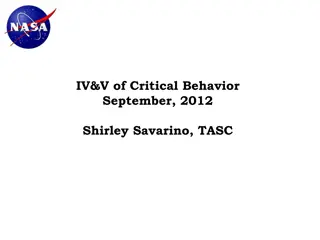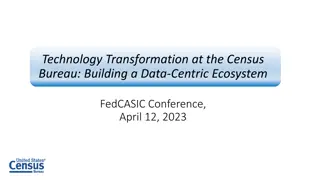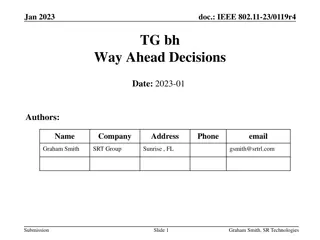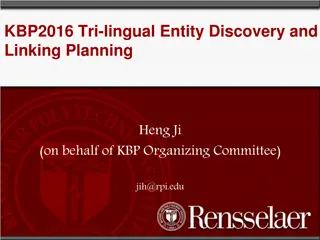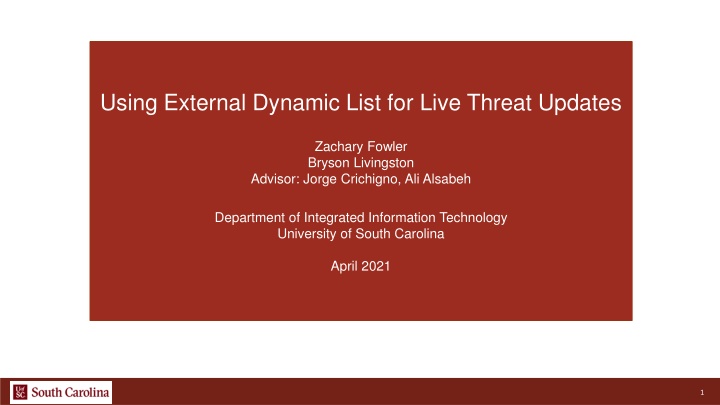
Enhancing Network Security with External Dynamic Lists for Live Threat Updates
Discover how External Dynamic Lists (EDL) are utilized to maintain up-to-date security policies on Next Generation Firewalls (NGFWs), ensuring a robust defense against new threats. Learn about the challenges of using static lists and the benefits of implementing dynamically updated lists for enhanced network security.
Download Presentation

Please find below an Image/Link to download the presentation.
The content on the website is provided AS IS for your information and personal use only. It may not be sold, licensed, or shared on other websites without obtaining consent from the author. If you encounter any issues during the download, it is possible that the publisher has removed the file from their server.
You are allowed to download the files provided on this website for personal or commercial use, subject to the condition that they are used lawfully. All files are the property of their respective owners.
The content on the website is provided AS IS for your information and personal use only. It may not be sold, licensed, or shared on other websites without obtaining consent from the author.
E N D
Presentation Transcript
Using External Dynamic List for Live Threat Updates Zachary Fowler Bryson Livingston Advisor: Jorge Crichigno, Ali Alsabeh Department of Integrated Information Technology University of South Carolina April 2021 1
Agenda Introduction Problem Description Background Information Proposed Solution and Implementation Conclusion 2
Introduction Next Generation Firewalls (NGFWs) use security policies to block/allow traffic from specified sources and destinations Security policies on NGFWs need to frequently updated to protect against new threats External Dynamic Lists (EDL) are used to keep security policies up to date 3
Problem Description Using a non-dynamic list of objects in a security policy has multiple issues Does not automatically update to include new threats Policy creator will constantly have to manually update the list to include new threats Ultimately leads to a less secure network External Dynamic Lists solve both issues 4
Background Information External Dynamic Lists (EDL) are text files stored on an external server The text files are updated frequently to protect from new threats Text files contain lists of one of 4 types of EDL IP Address URL Domain Predefined IP Address These lists consist of dangerous source and destination objects Used in security policies on NGFW 5
Proposed Solution and Implementation A text file (i.e. list of malicious IP addresses) is hosted on the external server NGFW1 uses the text file in a new security policy to block traffic to and from any IP address on the file NGFW1 dynamically imports the list at the configured interval and enforces policy without the need to make a configuration change or a commit on the firewall 6
Proposed Solution and Implementation Security Policy #1 uses the IP EDL in the address column to deny traffic to any IP address on the EDL 7
Conclusion With the use of External Dynamic Lists in security policies, users can more easily protect their networks from dangerous sources by using frequently updated object lists The possibility of an attack from a dangerous source significantly decreases with the use of EDLs 8

